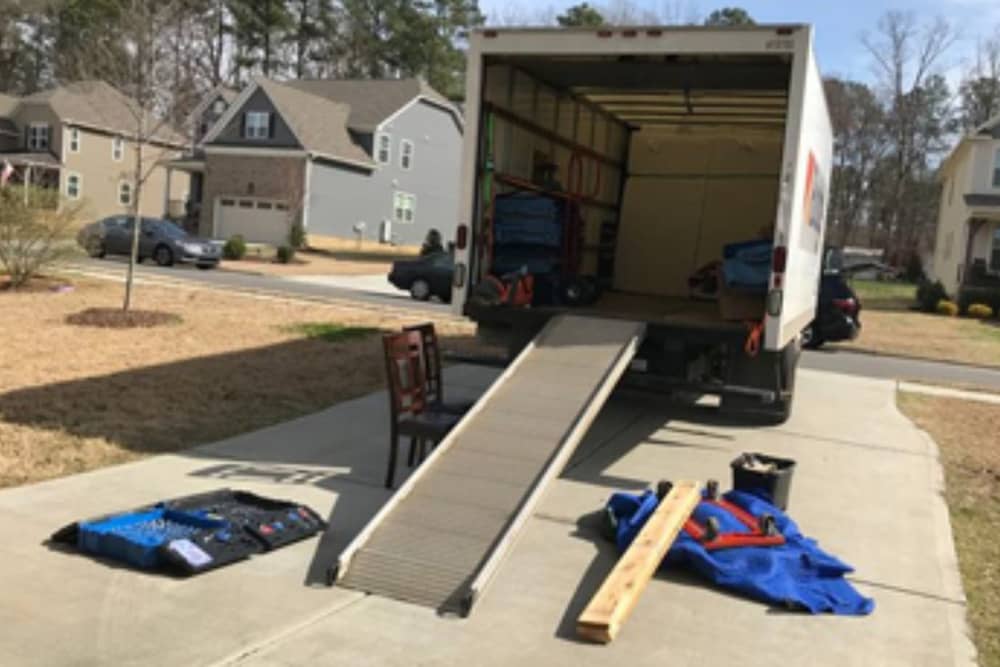Your wrist may be sore from signing two inches of mortgage documents, but the real fun begins now! You need to transfer your family’s medical records, host a garage sale, discontinue the utilities — oh, and pack up all your earthly possessions and get them from Point A to Point B. It is possible to get it all done without losing your cool: Follow our 8-week timeline to get from “We’re moving!” to “We’re home!”
8 Weeks Before
Sort.
Walk through every room and open every drawer; decide what to take to your new home and what to get rid of. Make a list of “keep” items that will require special packing or extra insurance coverage.
Purge.
Donate items you no longer want, or host a yard sale.
Hire movers.
Research moving companies. Always ask for the mover’s U.S. Department of Transportation license number; whether the company is bonded; and whether the company is licensed for interstate moves, if you’re moving out of state. Request in-home estimates to receive the most accurate pricing.
Contact your children’s school.
Notify the school that you’re moving, and obtain copies of your children’s records. Contact new schools for enrollment and record-transfer procedures.
6 Weeks Before
Make travel arrangements.
Book hotel stays if you’ll need lodging on the road or before your new home’s ready; book any necessary flights.
Order packing supplies.
Purchase standard boxes in various sizes; bubble wrap; packing paper; packing tape; and specialty containers, such as wardrobe and dish-pack boxes.
Contact your doctors.
Obtain copies of medical records for all family members, or have the records sent to your new physicians. Haven’t found new ones yet? Ask your current doctors for recommendations.
Contact insurance agents.
Find out whether your move necessitates changes in your medical, dental, vehicle or personal property insurance.
4 Weeks Before
Start packing.
Begin with items you use only rarely or seasonally (e.g., fondue pot; pool toys); save items you use frequently (e.g., TV remote; your toothbrush) until just before moving day. Snap photos of valuables and pack them separately; you’ll carry those items with you.
Label, label, label. Mark each box with its contents and the room it’s destined for in the new house. The only exception: Don’t list contents on a box that contains valuables, to avoid theft.
Inventory.
Keep a running list of each packed box, its contents and what room it belongs in. Later, you can match this against your moving company’s inventory sheet.
Measure.
Ensure that all of your belongings can make it out of your old home and into your new one; measure any tall, wide or oddly shaped items, as well as any doorways or tight spaces they’ll need to fit through, so there are no surprises on moving day.
Update your computer.
Download any necessary software updates and ensure that all of your files and photos are backed up to an online cloud storage service or an external hard drive that you’ll carry with you.
Make arrangements for pets.
Book a pet sitter or care facility for moving day. If you’re moving out of town, make travel plans for your furry friends and ensure your veterinarian has authorized your pets for the journey.
Contact utility companies.
Instruct existing utilities to disconnect services the day after your move; direct new utilities to install services at least a day before you arrive.
Consider storage.
If your new home won’t be ready when you leave your old one, research storage options in your new community.
Clear the freezer.
Start using up frozen food items that will be a hassle to move. Then, tackle the pantry and fridge.
Visit an auto mechanic.
Get an oil change, tire fixes and any necessary tune-ups to ensure that your car survives the move.
Change your address.
Visit USPS.gov or your local post office to officially change your address. Leave your forwarding address with a neighbor, just in case.
Alert important parties.
Notify your employer, banks, credit card companies, subscription services, friends and family of your move.
2 Weeks Before
Confirm the movers.
Contact the moving company and double-check your plans. Make sure the insurance in place is enough to cover your valuables.
Clear out.
Empty out storage units, safe deposit boxes and any other off-site storage spots. And don’t forget to pick up your dry cleaning.
Take time off.
Evaluate how many work days you’ll need to make the move, and then request time off from your employer.
Clean the rugs.
Have area rugs cleaned; they’ll arrive rolled and wrapped from the cleaner, ready to unroll at the new house.
Pay it forward.
As you pack, gather warranty information, manuals and other house-specific information in a binder for the new owners.
1 Week Before
Finish packing.
Aim to complete the general household packing a couple of days before moving day.
Pack your bag.
Your last bag should contain at least one change of clothes — or more, if you’re moving out of state — for each person in the family, as well as all of the basics (e.g., phone charger, toilet paper) you need to survive for a few days without the items on the moving truck.
Visit the pharmacy.
Refill any prescriptions you’ll need for the next month, and arrange to transfer prescriptions to a pharmacy in your new community.
Unplug.
Disconnect and clean any large appliances (e.g., washing machine, fitness equipment) you’re moving; contact a professional to disconnect gas lines. If you’re moving your fridge, defrost the freezer and clean it at least a day before you move.
Make your last donation.
Arrange for a final pickup of all remaining items in your “donate” pile.
A Few Days Before
Confirm the movers … again.
Triple-check arrangements with the moving company. Verify how much you’ll owe on moving day, and what forms of payment are accepted. Ask for a cellphone number for the day-of contact, and confirm the crew’s arrival time. Prepare written directions to your new home and hand them to the movers on moving day.
Get the keys.
Arrange to receive the keys to your new home, or schedule the realtor or landlord to meet you on moving day.
Donate food.
If you’d rather move fewer boxes, donate nonperishables to a local food pantry.
Disassemble furniture.
Place screws, brackets and fasteners in a small plastic storage bag, and label it. Even better: Tape the bag to the furniture’s underside.
Get rid of it.
Most movers prohibit moving boxes that contain paint, aerosol cans, matches, alcohol and other chemicals. Properly dispose of these items, or plan to move them yourself.
The Don’t Pack List
Keep these items off the truck and close to you on moving day:
Important documents (e.g., passports, marriage license, birth certificates, any records containing bank account information or Social Security numbers)CheckbookCredit cardsMedicationPhone and chargerLaptop and chargerToilet paperA change of clothes (one for each member of your household)Snacks and water (for kids and pets)A child’s special toy or blanket (if they can’t bear to pack it)JewelryFlashlightTape measureToolboxTrash bagsPaper towelsCashAny other valuables, heirlooms or irreplaceable items
Moving Day
Current Home
Say goodbye.
Take time to say a proper “so long” to your old house before things get hectic. Children, in particular, benefit from some closure: Walk through the house recalling fond memories you have, and talk about what fun you’ll create in your new home.
Meet the movers.
Greet the moving crew and ensure that all workers are representatives of the moving company you hired. Be sure the moving truck’s U.S. Department of Transportation license number is the same as the number on your estimate.
Supervise the load-in.
Assign a helper to watch the moving crew stack your belongings inside the truck, keeping an eye out for damage.
Clean the old house.
Tidy up rooms as the moving crew empties them, or consider hiring a cleaning service.
Keep valuables with you.
Be sure the movers don’t mistakenly load boxes containing your laptop, jewelry, passports and other irreplaceables you should keep near you at all times.
Make a final walk-through.
Lock your old home’s windows and doors, turn off lights and ceiling fans and make sure nothing’s left before you leave for good.
New Home
Roll out the carpet protector. Lay down plastic carpet protector at the new house, if your movers haven’t already done so.
Show the moving crew around.
Point out specific rooms so boxes end up where they belong.
Watch for damaged and missing items.
Your movers will make an inventory sheet, called the “bill of lading,” that notes the condition of your items, including damage to any boxes or furniture.
Pay the movers.
Complete the transaction using the payment method you agreed to when you confirmed the move. If the moving crew did a good job, a tip of 10 to 15 percent of the total fee is customary.
Get it in writing.
Before the movers leave, sign the inventory sheet — and make sure the mover in charge signs it, too. Get a copy for your records.
Do an initial clean.
Vacuum and mop floors before you set down furniture; wipe down countertops; and do a deep clean of tubs, showers and toilets.
Assemble furniture.
Grab your toolbox and start reassembling furniture; don’t wait until your helpers have gone home.
Start unpacking.
If you notice any damage to your boxes, set them aside until the moving company can return to inspect them. Take photos of the damage for your records.
More information, check here



